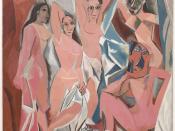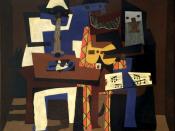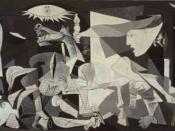Picasso was arguably the most influential artist of the twentieth century. He had some degree of influence in all styles of painting which were used during his time, and was known and respected by almost every art enthusiast on the face of the planet. Pablo Picasso, born Pablo Ruiz Picasso, came into the world on the 25th of October 1881 in the southern Spanish town of Malaga. Pablo was an artist from early in his life - he was a child prodigy. He began his career as a classical painter. He painted things such as portraits and landscapes. But this style didn't satisfy Picasso, he was a free man and wanted to express himself and ultimately leave a lasting mark on art, as we know it.
Picasso turned his attention to cubes. He invented Cubism - a radical art form that used harsh lines and corners to display a picture instead of the usual soft curves.
Picasso won a lot of fame for his Cubist paintings, but was criticized for it also. He designed and painted the drop curtain and some giant cubist figures for a ballet in 1917. When the audience saw the huge distorted images on stage, they were angry, they thought the ballet was a joke at their expense. Cubism lived on despite this. Other artists mimicked Picasso's Cubism, and it took hold. Picasso had only just begun his one-man art revolution. In the late 1920s, Picasso fixed himself upon an even more revolutionary art form - Surrealism. Surrealism emphasized the role of the unconscious mind in creative activity. Surrealists aimed at creating art from dream, visions, and irrational impulses. Their paintings shocked the world - particularly Picasso's - it was unlike anything anyone had ever seen before. He took advantage of this fact and also...


